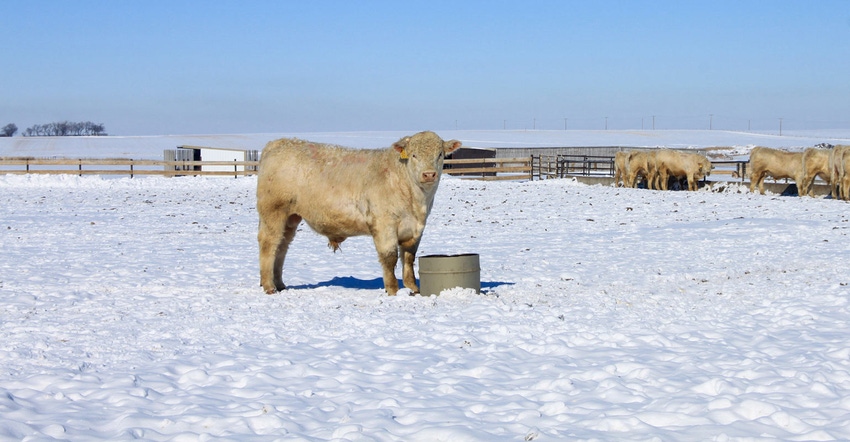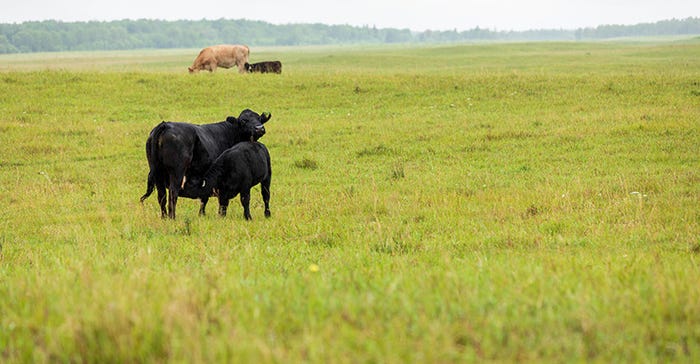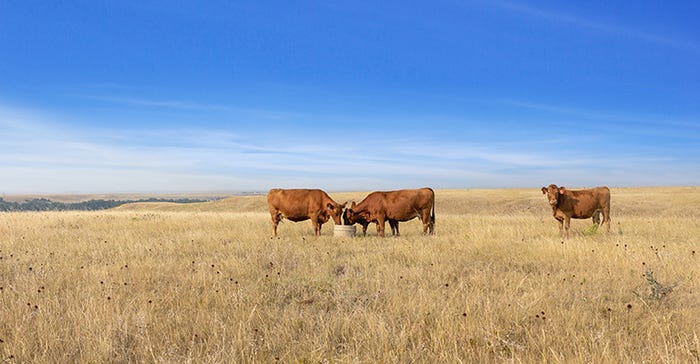Flax and balancing fatty acids in the diet for cattle performance
Like all things, it's about balance with fatty acids in beef cattle diets for optimal performance and health. Supplementing diets with flax can help.
March 1, 2023

Sponsored Content
Fatty acids, like amino acids, minerals and vitamins, are nutrients required by beef animals for a lot of physiological functions including energy, cell membrane integrity, immune health and most notably reproductive performance.
“Fatty acids play numerous roles in the body,” said Ethan Schlegel, director of Research and Nutrition for New Generation Supplements. “From the simplest as an energy source but also more complex such as aiding in gene expression, hormone modulation, immune signaling, growth and reproductive performance.”
Two categories of essential fatty acids are: omega‐3 and omega‐6. Essential fatty acids cannot be synthesized by the animal but must be consumed in the diet.
“The two main fatty acids that are most frequently discussed are omega-3 and omega-6 fatty acids, both of which have a lot of importance to the cow,” Schlegel notes. “It’s not so much about providing one and not the other, it’s more about balancing the two within the diet.”

Maintaining a proper balance of the two is critical for optimizing immune response and reproductive performance. Additionally, omega‐3 fatty acids are often found to be at a deficit for typical grazing situations so supplementation in the diet is usually necessary, especially in bulls and breeding females where the physiological breeding functions that are directly supported by omega-3 fatty acids such as hormone modulation, cell integrity and recovery are of high importance.
“While omega-3 fatty acids are prevalent in lush cool season green grasses and legumes, those levels drop off as the grass matures,” Schlegel said. “Supplementation of omega-3s then becomes necessary to rebalance the scale.”
It is also important to note that not all fat sources provide the same types of fatty acids, a key consideration when thinking about what cattle herds need to nutritionally support their performance.
“Flax has the highest level of omega-3s of all plant sources,” Schlegel said. “Conversely, the opposite of flax would be sunflower. While being high fat, [sunflower oil] contains more omega-6 fatty acids than omega-3.”

By rebalancing the scales in a beef animal’s diet by supplementing omega‐3 fatty acids to adequate levels for performance impact, studies have indicated that sperm quality in bulls and recovery in females post-calving can be significantly improved.
“Two areas where supplement flax tends to work well is in reproductive performance and immune support,” Schlegel says. “Reproductive support from a hormone signaling perspective, and immune support from an anti-inflammatory and recovery standpoint.”
A study conducted at Kansas State University using flaxseed and flaxseed oil as the fatty acid source to breeding bulls showed 9% greater sperm motility and 21% more normal sperm than an un‐supplemented control group. Ranch trials have also shown similar results. In a study conducted in Missoula, Montana in a commercial herd with typical to the area management system, bulls supplemented with flaxseed and flaxseed oil showed an 8% increase in sperm motility and 22% more normal sperm than the control group that were not supplemented with flaxseed or flaxseed oil.
On the female side, flax supplementation has shown efficacy in quicker breed back after calving. In a university study, a female herd that was supplemented with flax through their third trimester and calving showed an increase of almost 20% in ovulation within 30 days post-calving, and most cows cycling over 2.5 times by 60 days post-calving, an increase in 50% compared to the control group and historical ovulation cycles of the same herd.
When asked when producers might consider supplementing flax and omega-3 fatty acids to support their herds, Schlegel suggests, “during pre-breeding, and any instances where there are high stress events such as calving or weaning.”
Pre-breeding performance improvements are realized when supplementing flax 60 days prior to breeding and throughout the breeding season. For stress events like weaning, Schlegel advises supplementing 28 days prior to and throughout weaning.
“Products high in omega-3 fatty acids can be used in a very targeted approach in specific timeframes to optimize value, and different process to meeting an animals’ basal nutritional requirements with key vitamins and minerals that yield ROI when fed year-round,” Schlegel concludes. “Like all things, it’s about balance.”
To learn more about supplemental flax, omega-3 fatty acids and the supporting research, visit Omega 3 – New Generation Supplements (newgensupplements.com).
About the Author(s)
You May Also Like



